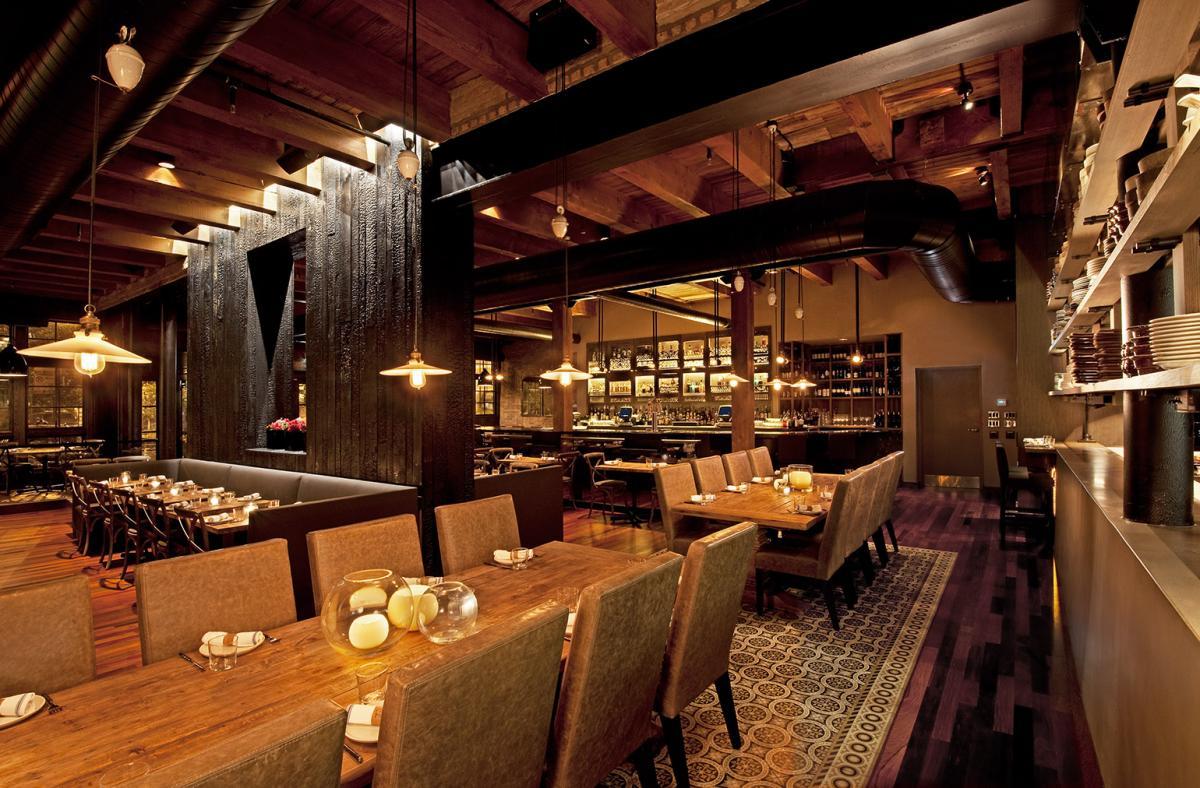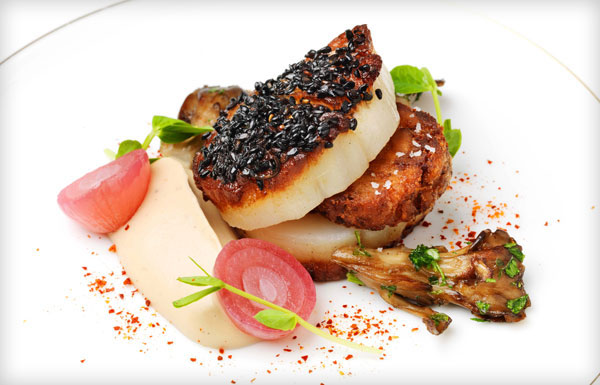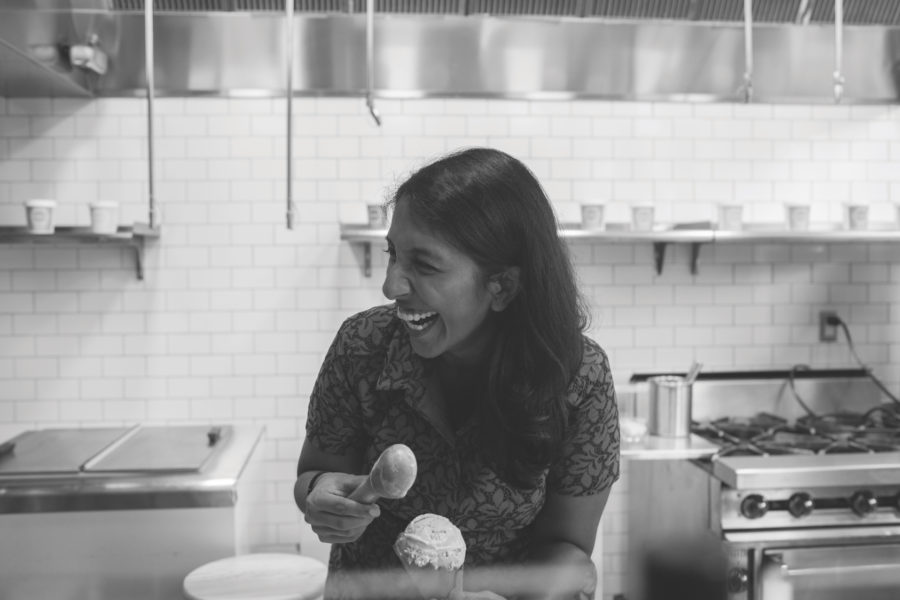Barely more than a decade ago, restaurants seemed to exist in two wholly disparate groups: there were the elusive, exclusive high-end eateries, and a series of castaway cheapo spots for rest of us. So thank industry trailblazers like Chicago’s Boka Restaurant Group—behind Girl & The Goat, Perennial Virant, Momotaro and more—for leveling the playing field, opening establishments serving carefully crafted dishes in a blessedly fuss-free environment, and at a significantly lower price point.
“We helped create a whole different sketch of what a chef-driven restaurant means, which is a huge win for consumers,” said co-founder Kevin Boehm. “We use regional, seasonal and farm-sourced ingredients and offer an elevated level of service, but are in a slightly more casual setting…and I guess we play the music a little bit louder.”
We spoke to Boehm about the genesis of the so-called “white tablecloth revolution,” as well as whether he thinks we’ve gone a touch too far in the fast-casual direction.

Taste Talks: Most revolutions arise from major, inciting incidents. So when and why did the hospitality industry begin to shift away from more formal, “white tablecloth” restaurants?
Kevin Boehm: It was basically borne out of the economic collapse of 2009. Almost immediately, you began to see movement away from majorly ambitious and expensive restaurants, in favor of, for lack of a better term, two star restaurants, or share plate restaurants, and now quick service restaurants, which even the guys at Eleven Madison Park in NYC are getting into now. And certainly, the BOKA Group has had a huge hand in that. We opened Girl & the Goat and GT Fish & Oyster right in the middle of the economic downturn, and ushered in a style of restaurant that is much more affordable, but still upholds the same tenets as all of our other restaurants.
TT: How have you gone about refining and redefining the dining experience at each of your restaurants within the Boka Restaurant Group?
KB: When it comes to conceptualizing restaurants, our main priority is, first and foremost, to create something unique. And the second most important aim is to appeal to a wide range of economic levels. If you look at GT Prime, we were spurred by the fact that, no matter what anyone claims or says, no one has ever actually reinvented the steakhouse. So we thought, what if we offer different ounce sizes? Everyone is so used to the commitment of 16 or 24-ounce steaks, but what if you could order 4-ounces or 8-ounces instead, all pre-sliced, so you can share everything?
We have 14 current concepts within the Boka Group, and only one comes close to averaging out at $100 a head. Most fall into the $50-60 range, because we like restaurants that are super inclusive.
TT: There’s certainly nothing inherently wrong with creating a fine dining atmosphere. I know that when I go out to eat, I want there to be a certain degree of pomp and circumstance, or else I might as well just eat spaghetti at home. So how do you make a restaurant experience special, without making it stuffy?
KB: I love the Maya Angelou quote “I’ve learned that people will forget what you said, people will forget what you did, but people will never forget how you made them feel.” That kind of characterizes hospitality to me. It’s not what you’re doing to your customers or giving them, it’s how you’re making them feel. I think that’s the key; manipulating the end result you want to achieve, and being intuitive enough to know what makes people comfortable or uncomfortable.
When I was in my early 20’s, I really interested in fine dining; going to fancy restaurants was my favorite thing to do. But because I was young, and perhaps perceived as not important enough, or wealthy enough, or knowledgeable enough, I’d invariably be seated at the worst table, or the sommelier would talk over my head. You need to know your audience, always. And if you, for example, want pomp and circumstance, we should be able to read that, and to give it to you.

TT: Do you think, as fast-casual concepts have increasingly overtaken white tablecloth restaurants, that we’re moving too far in the other direction? This is the hospitality industry, after all, so what’s your response to, say, the omnipresence of backless stools, which seem decidedly anti patron… designed to usher diners in and out as quickly as possible?
KB: Honestly, I think a lot of it is economically driven. Especially with the current regulations regarding what you have to pay people, a lot of choices are made within restaurants not out of concern for hospitality, but as a means of survival. But it’s all cyclical. People are going to revert back, at a some point, to not wanting to share their food anymore, to wanting their menus to take on a familiar format of apps, entrees and desserts, to wanting to receive real service and hospitality. And the restaurants that do that, and do it well, will stick out in a market that’s putting less and less emphasis on it.
Thankfully, it’s already one of the hallmarks of our company. We look at design, hospitality and food as being all the same level; none is more important than the other, it’s an alchemy of all three of those things. So we simply don’t build places where the experience isn’t founded on hospitality and comfort. We’re on a constant search to create an intersection of artistry and economic responsibility, that results in an overall optimal experience for the guest. That’s the thrust of the spirited conversations we have, while sitting in Boka headquarters!
TT: As you’ve said, it’s all cyclical. So what would you say have been some of the most pervasive phases and stages in Chicago’s dining scene over the last couple of decades, and where do you think it’s headed next?
KB: I think we’ve been on largely the same trajectory as NYC, save for maybe an increased interest in the molecular gastronomy movement, thanks to Omar Cantu and Grant Achatz and Graham Elliot Bowles. But after the economic crises occurred in 2009, the entire nation turned towards communal tables and shared food, and now, same as New York, fast casual and food courts are very big in Chicago, with a slight shift back towards fine dining. But where’s it going next? I can’t say I know the answer to that yet. Although it is important to us that we remain leaders, not followers, which is why we’re constantly trying to come up with new concepts at Boka, and thinking about what the public will respond to. In fact, we generally have a pretty good queue of ideas, it can just take us years and years to hook up with the right chef partner.
TT: Are you at liberty to discuss any of those “on the bubble” projects?
KB: Nope.
TT: I had to try.
KB: It was a very good try!
“Want to hear Boehm expound further on the white tablecloth revolution ? Secure your ticket to Taste Talks Chicago today!”











